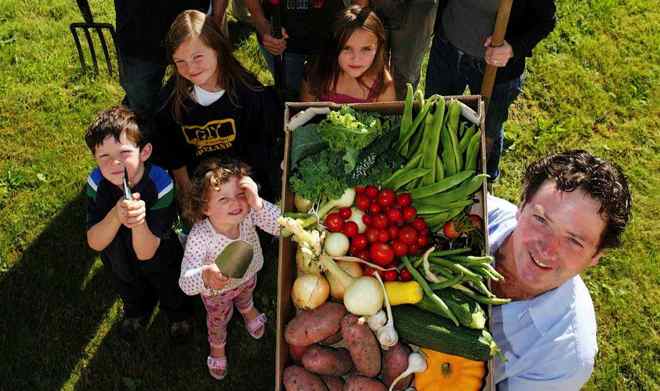I had my Road to Damascus moment in a supermarket in Ireland about seven years ago, when I realized some garlic I was about to buy was imported from China. On looking into the problem I discovered that Ireland was importing €5 billion of food each year, while exporting €7 billion. Some types of food Ireland was importing and exporting in equal quantities.
I felt that was pretty silly, and being a contrary git, I decided to grow my own garlic to reduce my reliance on the food chain. Quickly realizing that I wasn’t very good at it, I set up a local food growers group in order to learn from real experts and get to know like-minded folk in my community. Five years on, 50,000 people and over 800 local food projects are involved in the Grow It Yourself (GIY) network in Ireland, UK and Australia.
At GIY, we’ve been thinking a lot about urban food growing in particular and how it might actually save the world. Because of the very real space constraints, urban food growing is often dismissed as a waste of time that won’t help the planet feed billions of hungry mouths in the coming century. On one level this is absolutely true. You simply cannot grow as much on an apartment balcony as you can in a field.
Urban food growing assumes an incredible importance when viewed through the lens of ‘food empathy’ – a deeper understanding of food, where it comes from, how it is produced – that arises when people grow their own food. Acquiring food empathy has a positive impact in all sorts of unexpected places. Food empathetic people make healthier food choices, recycle more and waste less. When they engage with the food chain, they make different buying decisions such as purchasing more seasonal, local and organic food. So acquiring food empathy by growing food can make us happy, healthy and more sustainable. In the GIY movement, the person who grows some herbs in a pot is just as welcome and valuable as the person with a ten-acre smallholding.
In the food empathy context, urban food growing is not a waste of time – it’s the silver bullet. Why? Because most of us will be living in cities. Over the next 20 years, the global urban population will rise to approximately five billion. Happily, when we talk about food empathy, it’s scale that is important. Food-growing city dwellers the world over can become an army of food empathetic people.
GROW HQ is our next big step – it is an urban food empathy project being created in Waterford City, Ireland. It is a place where people can come to learn about homegrown food, and how to grow, cook, and eat it. GROW HQ is a training center, farm shop, cafe and urban food garden. It is a sustainable social enterprise that we hope will inspire similar projects around the world.
For more information visit www.giyinternational.org.















